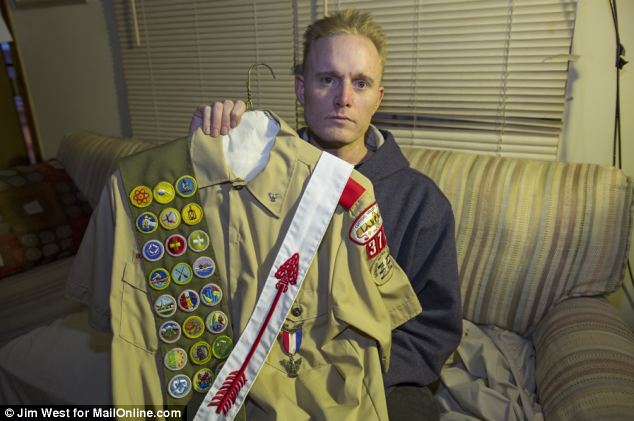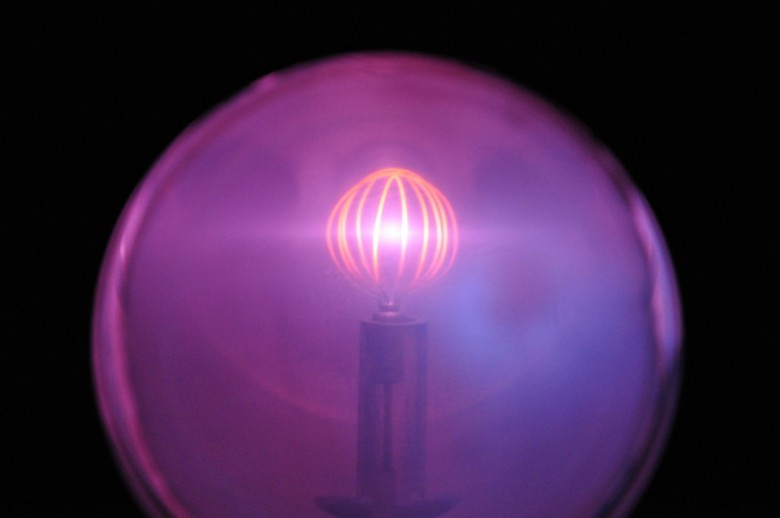Nuclear reactor in his barn

The nuclear industry is one of the most important and developed in our country: for example, nuclear power plants account for 18% of total electricity generation (and in the European part - up to 42%). Nuclear energy is an unusually useful, but extremely dangerous and unpredictable "beast." Therefore, in any case it is impossible to admit dilettantes to it, it is many times more dangerous than a monkey with a grenade. However, enthusiasm and resourcefulness sometimes help dilettantes to make their own grenade. More precisely, a nuclear reactor. At home.
During the industrial revolution, the need for engineering personnel contributed to the spread and popularization of secondary education. In the mid-20th century, the scientific and technological revolution began , part of which was the emergence of the nuclear industry, a completely new industry for humanity. For which were needed trained workers, which means that it was necessary to popularize. And frames, as is known, are forged from their youth.
Of course, the splitting of atoms is not the gear for you to do. It is important to have a fairly high level of abstract thinking. But after all, it is impossible to touch and see electricity, we are dealing with abstraction and its indirect manifestations. But the practical application of electricity can be taught even to a person who absolutely cannot imagine what electrons are. For example, a child. To do this, there are children's sets, teaching the basics of electrical engineering: all sorts of light bulbs, capacitors, switches and other resistors. Or sets a la "Young Chemist", in which there are a bunch of different chemicals and instructions with descriptions of experiments.
The authors of the children's science-popular set Gilbert U-238 Atomic Energy Lab , which was produced for a short time in the USA in 1950-51, followed the same path.
')

In addition to various tools designed to acquaint the minds of science with the basics of atomic physics, the set contained several samples of uranium ore and low-level radioactive isotopes of lead, polonium, zinc, and ruthenium. This could happen only in those years when people still knew little about the effects of radiation on the body. By the way, these kits sometimes pop up on Ebay, although the samples in them are already very weak and do not fall under the restrictions on trade in radioactive materials.
The demand for kits for young nuclear scientists turned out to be small, and they were not quite childish, at that time, almost $ 50. So a lot of Americans got an increased dose in childhood. But today, the general availability of information has led to the fact that young minds very often excite ideas that would be relevant 60-70 years ago, at the time of the Atomic Energy Lab. And over the years, some kids come to mind that just watching the radioactive glow is too dull and shallow. Need something more ambitious. For example, why not make your own atomic reactor. Very small, for the sake of the beauty of the idea.
Radioactive boy scout
Once upon a time in sunny Detroit there lived a boy named David Khan . He was a member of the boy scout movement. Since childhood, passionately fond of chemical experiments, often very dangerous. But over the years, the obsessive idea of obtaining all the substances from the periodic table seized the inquisitive young men. And for this, he decided to build his own atomic reactor in a shed near the house. Probably with his help, David was planning to get some transuranium elements .
For the realization of his plan, he showed remarkable wit: for a long time he collected particles of radioactive materials from all sorts of household appliances and appliances, and he elicited necessary information from scientists, posing as a student or teacher in correspondence. It rolled.
In the end, David assembled a primitive installation in which he was going to launch a reaction. Fortunately, the lack of an all-knowing Wikipedia in 1995 prevented him from creating a truly dangerous source of radiation. Having collected, as it seemed to him, several radioactive substances in the correct construction, David could not start the reaction of nuclear fission. Instead, it turned out a ball of foil, the radiation from which is about 1000 times greater than the background. Seeing the testimony of the dosimeter, "Radioactive scout" (as he was nicknamed after the story got public) struck down and decided to get rid of his crafts. At night, he began to load the installation components into the car, to take him to the forest and bury him. But his nightly activity was interested in the police patrol, and as a result, the FBI and the Nuclear Energy Commission became interested in David’s practical experience.

The end of the story turned out to be inglorious: the entire barn with the contents was disposed of at the cemetery of low-level radioactive waste, David's parents were fined with a lot of money, but he himself did not find a place in his life later. He died at the age of 39 , September 27 last year - one day before the Russian Day of the nuclear industry worker.
Young nuclear scientist
But at Taylor Wilson, everything went much better. He went the other way and did not try to create a "classic" thermonuclear reactor. At the age of 14, a talented kid built a full-fledged installation in the garage that implements the principle of electrostatic plasma confinement . In short: in a sealed container, Taylor created a vacuum, supplied a small amount of deuterium previously extracted from the water, which was ionized and turned into a high-temperature plasma from deuterium ions held by a powerful electromagnetic field inside a wire sphere made of tantalum and tungsten alloy.


Although the Taylor plant successfully split deuterium atoms, it consumed far more energy than it produced. In fact, it was a normal laboratory setup, which allows us to create new unstable isotopes using the neutron fission produced during the reaction, which can be identified by the signature of their radiation.
Fortunately, the young man did not gut the devices, extracting finely dispersed radioactive substances from them, and buying up "fonya" materials in dubious online stores, as did Richard Hendl . Taylor initially approached the issue from a scientific point of view, having studied the theory well and clearly received the support of the family. This saved him from radiation and inhalation of powdered substances, which is much worse. The experience gained inspired the guy to continue to engage in the atomic theme. A young scientist at age 18 spoke at TED with the idea of creating compact "disposable" atomic reactors that have been operating without refilling for about 30 years, and then disposed of. In fact, huge atomic batteries that anyone can buy. The young talent even talked about their developments Obama. In general, the further life and career of Taylor Wilson should be far more cloudless than that of David Khan and Richard Handl. And all because atomic energy does not forgive mistakes and does not tolerate an amateurish approach.
Peace to you the sky over your head and isotopes with a short half-life!
Source: https://habr.com/ru/post/400603/
All Articles